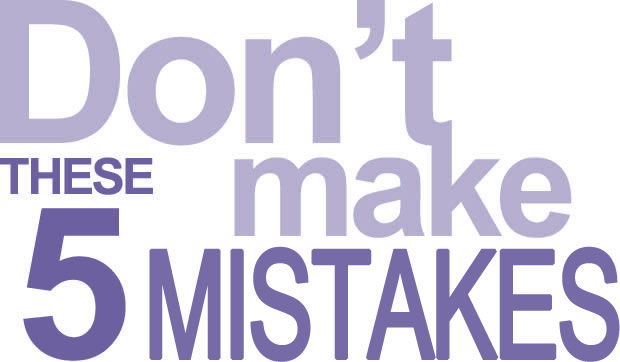
Exclusive ‘No Holds Barred’ Interview with Grandmasters Rick Moneymaker and Tom Muncy
Recently DSI Headquarters was able to sit down with Grandmasters Rick Moneymaker and Tom Muncy for a ‘No Holds Barred’, ‘NO B.S.’ interview and ask the martial arts pressure point gurus questions.
DSI: Pressure Points are easy to use. What do you say to those right after a seminar who think “there is just too much to learn”
GM Rick Moneymaker: “I don’t plan to allay these fears. For years martial artists searched in vain for this information. Now we have the ability to hand it to them on a silver platter. All they have to do is step up to the plate, buy a few books and dvds, got to seminars and they will have the information they are looking for. This is ten times easier than I had it. If they want the info, it is now being given to them. The other side of that coin is that their competitors are doing what is necessary to learn. So now they are faced with a real problem. Their competition is doing what is necessary to learn about pressure points and how they work. The comment that seminar attendees should be making “Thank goodness someone cares enough to share this once secret information and has developed a teaching syllabus that makes it possible for everyone to learn.”
GM Tom Muncy: The piano is easy for me to play but it took lots of practice and study to make it easy. Points are the same way. There is no easy way but learning and practicing. At least we are providing the framework for others to follow and it took years for that to be developed. Students will not have to spend the time and energy we did. All they have to do is connect with us. On email, on social media, attend seminars and study with qualified instructors to have the easier way.
DSI: How does the DSI teach these principles (Players to the Game)?
RM: One of the methods that we use is to take one technique, have the attendees do it and measure how much of their total power it took to get the job done and then we show them how to add ‘Players’ and after adding about six or seven we have them measure how much of their power it took to do the same technique. It usually goes something like this without ‘Players’ 90% with ‘Players’ 10% of your power and 90% left over in case something goes wrong.
TM: DSI Instructors have their own way but I start with the basic principles and the ‘Five Element Theory’ using several simple techniques to illustrate the effectiveness of applying slight pressure to the right places. Then there is a base to add more ‘Players’ to increase effectiveness even more. We constantly emphasize the need for safety and gentle application of force to get the feel of the techniques on different body types.
DSI: How many ‘Players’ are there?
RM: Over 100.
DSI: How can you possibly learn so many and be able to use them?
RM: This is a learned skill, the hard part is getting the info. Once someone shows you how to do it, a little practice is all that is needed to master the skills. I have explained some ‘Players’ to some students over the phone and within a couple of days they are calling back to tell me how well it was working. When you think about it, it is kind of amusing, most martial artists spend a considerable amount of their time looking for information and trying to understand it. The DSI puts it there in front of everyone and makes a sincere effort in trying to teach them. People may be looking for a hidden agenda that simply doesn’t exist, the DSI has no plans to steal students or disrupt organizations, we are simply a technical resource group. We share info that will make everyone’s martial art a lot easier to do. It has always been our goal to be known as the ‘tech support group for the marital artist’. That is why so many people use us for technical support. No threat, just lots of info that people have been looking for. We stand by waiting and daily more and more people find out about us and start to tap into the information. Talk to our seminar attendees and most of them will tell you that they are amazed at the immense amount of information that is shared during the seminar. Most will tell you that it is ten times more than they are used to getting and a lot more than they can absorb at one time. We recognize this and also know that each person come to the seminar looking for something different, by giving this much info at one time everyone goes away with something they can use.
TM: Rick and I did and others can also. It takes practice and the ability not to let old paradigms prevent progress. After all, we have put the music on paper, all others have to do is to practice so they can play as well.
DSI: Going back to this hidden agenda thing. Why do you think that large organizations and clubs feel that way?
RM: It is the old power struggle thing, instructors are afraid of losing students and are afraid of students discovering that their instructors do not know everything. This is really absurd because no instructor in the world is an expert on everything. That is one of the reasons the DSI brings different instructors on tour to the conventions. It shows that diversity is the greatest strength and asset.
DSI: Do they feel threatened by the information?
RM: I think that they are overjoyed by the amount of information and at the same time humbled by the acknowledgement that there is so much more info out there to be absorbed. They must understand that this is a lifetime study, the growth curve is phenomenal. There has never been another time in history where so much information on so many different platforms is readily available.
TM: Although I agree with what Rick has said about power struggles and being threatened by the information, it has been my experience with large organizations and affiliates that the bottom line for these groups is money. Many of the full time instructors manage very successful financial programs and I believe they are not as threatened by the information so much as what it might do to the cash flow. What they are doing in their programs works for their main objective and that is profit.
DSI: What, in your opinion, is the best way for people to take this information on board?
RM: Each case is different. The people we have seen who have the most success and make the biggest improvements are the ones who connect with us online on Facebook, Twitter, watch our Youtube channel, show up at the seminars with their students, get our books, dvds and charts and go back to their schools and practice everything they have seen. I have asked these people if I could buy back the info that they invested, and have now, would they sell it to me for $50,000, and every one of them told me that they would not want to be without this information.
DSI: What about the instructor who says to a student “You do not need to learn that stuff.” Or says, “That’s not Traditional Martial Arts”.
RM: In my opinion he is mistaken. If you decide not to learn this material and your opponent does learn, who is better off? How would you like to fight WWIII with WWII technology? Not smart is it?
TM: I think we are back to decisions again. Learning is exposing yourself to various forms of data, evaluating its usefulness and deciding whether to learn more or take another avenue. You can make that decision or let someone else make it for you. However, it is just not smart to bring a knife to a gun fight.
DSI: Here at DSI Headquarters we are getting reports of many security/doormen/bodyguards are taking this information on board at an introductory level and getting great results. Do you find this is happening all across the globe?
RM: Yes, We are getting personal calls saying how well it works and how easy it works in USA, Canada, UK, New Zealand and Europe
DSI: How do people know if they are on the right track when utilizing Bunkai (kata self defense)?
RM: It is an easy test. Try it on your training partner with him resisting. Take out the dojo compliance training method and apply it to a resisting opponent. The truth will be very obvious.
DSI: What about those people who say that kata is purely for training, to develop coordination, balance, power, concentration and so on?
RM: This is true it does all of this on the basic level. I think it is time now for martial artists to embrace the idea that kata has another purpose. It is a virtual encyclopedia or blueprint of martial arts application, science and principles. Think about it, do we really need to have kata for the purpose of developing physical skills? Have we not developed better training drills and gym equipment that can get you in better physical shape than kata?
TM: Sincere kata training will do what is suggested but I believe traditional kata was used to develop and improve fighting skills. Applying balance, coordination, balance, power and concentration to a technique make a better fighter. The people who designed katas got plenty of exercise just living, there has to be a higher goal.
DSI: Some say that bunkai does not work on the street, what do you say to that?
RM: If they are referring to the block, kick, punch, karate-do bunkai then I agree totally. People who understand and do Karate Jutsu bunkai never make such a statements.
TM: As a former police officer and trainer, I have seen people who carried guns who could not hit the street if they fired the weapon in a crisis situation (some even just on the range). Jutsu techniques are effective if people know how to use the weapons. There are people who have done this in their jobs as bouncers and bodyguards, ask them!












